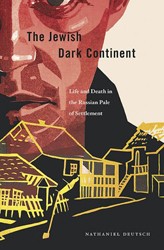By
– August 25, 2011
Part of Yad Vashem’s “Comprehensive History of the Holocaust,” this book is likely to become the standard work on the theme of the Holocaust in the vast stretches of Eastern Europe that were part of the Soviet Union during the Second World War. Yitzhak Arad is a prolific historian who was also an eyewitness, as a boy in occupied northeastern Poland who escaped from a ghetto and joined the Jewish partisans. A master of the vast literature in numerous languages on the Holocaust in Eastern Europe, Arad also makes effective use of original documents that became accessible only after the fall of the Soviet Union. This book is carefully crafted to place the annihilation of millions of Jews into the contexts of Russian and Soviet history. The Second World War started with Russia and Germany effectively as allies and then turned into the titanic struggle that resulted in the ultimate German defeat, but at a cost of perhaps twenty million Soviet dead, including millions of soldiers but even more millions of civilians. This book lays out the systematic development of the Nazi German campaign to eliminate the Jews through identification, plunder, ghettos, mobile mass murder units, as well as death camps. Arad also carefully examines the attitudes and behavior of the local non-Jewish populations, especially in the Baltic republics, Belarus, and Ukraine. The final section of the book describes Jewish efforts at survival and armed resistance. This is a fundamental book on the Holocaust that should be read and pondered. The Holocaust in the Soviet Union is the 2009 National Jewish Book Award winner in Writing Based on Archival Material. Bibliography, endnotes, illustrations, index.
Robert Moses Shapiro teaches modern Jewish history, Holocaust studies, and Yiddish language and literature at Brooklyn College of the City University of New York. His most recent book is The Warsaw Ghetto Oyneg Shabes-Ringelblum Archive: Catalog and Guide (Indiana University Press in association with the U.S. Holocaust Memorial Library and the Jewish Historical Institute in Warsaw, 2009). He is currently engaged in translating Polish and Yiddish diaries from the Łódź ghetto and the Yiddish Sonderkommando documents found buried in the ash pits at Auschwitz-Birkenau.





